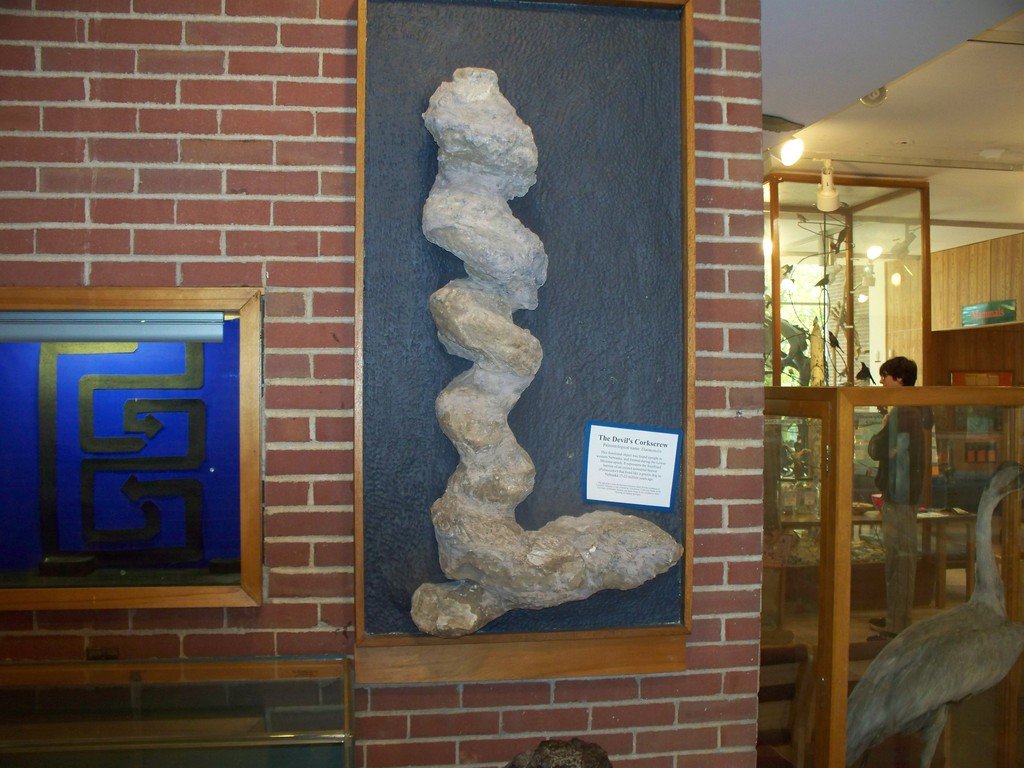Description: The “Devil’s Corkscrew” (the paleontological name is Daemonelix) is a giant trace fossil that was found upright in western Nebraska, formed during the Lower Miocene epoch. It represents the fossilized burrow of an extinct terrestrial beaver (Paleocastor) that lived like a prairie dog approximately 17-23 million year ago.
This specimen is from the Harrison Formation, about 20 miles southwest of Crawford, Nebraska. It was collected by Cyril Harvey II and Alan Smith, of the University of Nebraska Museum and James Thorp. It was mounted by Ansel Gooding, who taught at Earlham College. It is now in the Joseph Moore Museum’s permanent collection.
This specimen is approximately 105.6 cm tall based on the standard height of a brick (2.25 inches tall)
All pictures, text, design © Forum FMF 2006-2025


